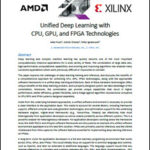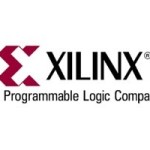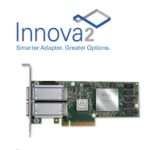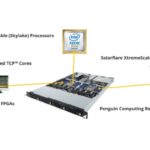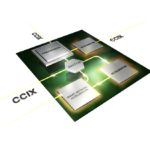This is the first in a five-part series from a report exploring the potential of unified deep learning with CPU, GPU and FGPA technologies. This post explores the machine learning potential of taking a combined approach to these technologies.
Unified Deep Learning with CPU, GPU and FPGA Technologies
Deep learning and complex machine learning has quickly become one of the most important computationally intensive applications for a wide variety of fields. Download the new paper — from Advanced Micro Devices Inc. (AMD) and Xilinx Inc. — that explores the challenges of deep learning training and inference, and discusses the benefits of a comprehensive approach for combining CPU, GPU, FPGA technologies, along with the appropriate software frameworks in a unified deep learning architecture.
Xilinx Demonstrates Breakthrough Optical Networking on the road to 7 nm
Today Xilinx announced the FPGA industry’s first demonstration of breakthrough 112G PAM4 electrical signaling technology for optical networks, as well as announcing the addition of 58G PAM4 transceivers to its 16nm Virtex UltraScale+ portfolio. “Xilinx has a long history of driving standards efforts and pushing performance limits in serial interconnect technology, and continues to do so with the industry’s first 112G PAM4 demo as well as with its 58G PAM4 solution, here today for customers to begin designing in with,” said Karl Freund, senior analyst, HPC and machine learning, Moor Insights & Strategy. “Today’s Xilinx announcements represent a significant leap forward for network architects who continue to be challenged to improve bandwidth performance of their optical networks.”
Mellanox Announces Innova-2 FPGA-Based Programmable Adapters
Today Mellanox announced the Innova-2 product family of FPGA-based smart network adapters. Innova-2 is the industry leading programmable adapter designed for a wide range of applications, including security, cloud, Big Data, deep learning, NFV and high performance computing. “Xilinx is pleased that our All Programmable UltraScale FPGAs are accelerating Mellanox’s Innova network adaptors,” said Manish Muthal, vice president of Data Center Business at Xilinx. “Our combined technology enables the rapid deployment of customized acceleration for emerging data center and high performance computing workloads.”
“The Ultimate Trading Machine” from Penguin Computing sets Record for Low Latency
The world of High Frequency Trading is all about reducing latency to make money. At the recent STAC Summit in Chicago, a Penguin Computing device called The Ultimate Trading Machine achieved a record-low 98 nanosecond tick-to-trade latency, some 18% faster than the previous world record. “Facing tremendous pressures to optimize the transaction lifecycle, the financial services industry helps drive innovations in many core technologies. At Penguin Computing, we empower our customers with with open technology solutions that achieve performance requirements while keeping costs low and avoiding vendor lock-in. We are proud to join with our partners to deliver this Ultimate Trading Machine.”
CCIX Project to link ARM Processors and FPGAs for HPC
Today ARM, Xilinx, Cadence, and Taiwan Semiconductor announced plans to produce the first test chip for the Cache Coherent Interconnect for Accelerators (CCIX) project. CCIX (pronounced “C6”) aims to prove that many-core ARM processors linked to FPGAs have a home in HPC. “The test chip will not only demonstrate how the latest Arm technology with coherent multichip accelerators can scale across the data center, but reinforces our commitment to solving the challenge of accessing data quickly and easily.”
AWS Adds FPGAs to its Public Cloud
Amazon Web Services chief evangelist Jeff Barr announced in a recent blog post that the company was adding Xilinx FPGAs to its Amazon Elastic Compute Cloud (Amazon EC2). The addition of this new hardware will allow users to create accelerated FPGA applications, but AWS will also let users sell these applications on the AWS Marketplace. “We are giving you the ability to design your own logic, simulate and verify it using cloud-based tools, and then get it to market in a matter of days,” said Barr.
Nimbix & Xilinx Accelerate FPGA-Based Workloads in the Cloud
Today Nimbix announced the immediate availability of the Xilinx SDAccel development environment for on-demand development, testing, and deployment of FPGA-accelerated workflows in the Nimbix Cloud, powered by JARVICE. The SDAccel development environment combines the industry’s first architecturally optimizing compiler supporting any combination of OpenCL, C, and C++ kernels, along with libraries, development boards and industry standard development and run‐time experience for FPGAs.
FPGAs Accelerate Machine Learning at Baidu
Xilinx has announced that Baidu, a Chinese language Internet search provider, is utilizing Xilinx FPGAs to accelerate machine learning applications in its datacenters in China. “Acceleration is essential to keep up with the rapidly increasing data centre workloads that support our growth,” said Yang Liu, executive director at Baidu.

